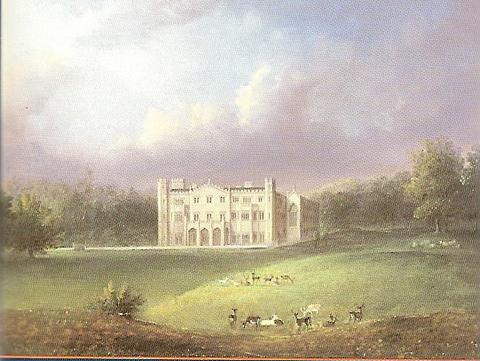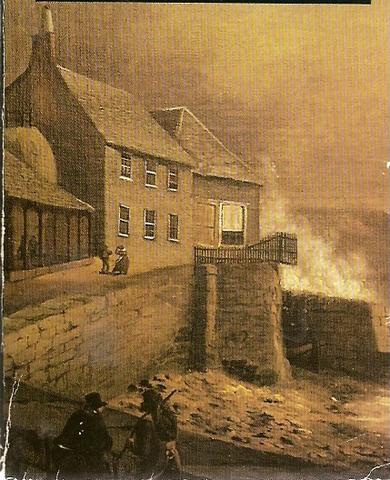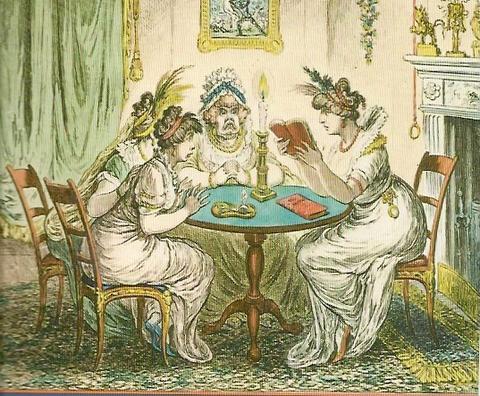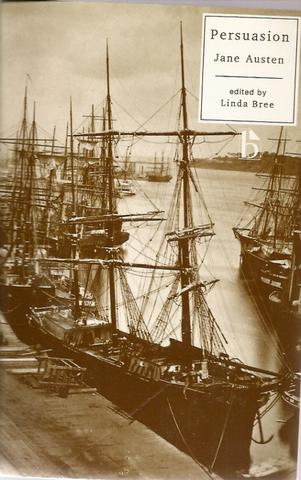Ellen and Jim Have a Blog, Too
We are two part-time academics. Ellen teaches in the English department and Jim in the IT program at George Mason University.


Austen: subtexts in the fight over recent new editions · 7 June 08
Dear Friends,
A few days ago now I posted about the controversy among Austen scholars over Chapman’s 1923 scholarly textual editing of all Austen’s novels. The question as I understood it was, Are the differences between the original published texts and Chapman’s edited versions so frequent and pervasive to leave a different impression and change the meaning or feel of Austen’s texts significantly. Since then through the kindness of friends who read this blog, I’ve been able to read Janet Todd and Kathryn Sutherland’s debate in TLS as well as Simon Jarvis’ comprehensive review of Sutherland’s JA’s Textual Lives and two of the new Cambridge Austen texts (which do in the case of MP and S&S choose as copy text the second editions), learn about the Oxford editions, and myself have bought and read the introductions and notes to the New Penguin editions of MP and S&S, whose copy texts are the first editions of these novels.
I’ve come to the conclusion there’s more than a debate over which copy text to use going on here; the conflict is also between different agendas which shape how the different groups want to understand Austen’s life, political outlook, the history of the biography, and conservative, kitsch or heritage-style Janeism. In brief, Kathryn Sutherland, Claudia Johnson, and others abjure a perceived picturesqueness & tea-and-crumpets quaint feel in the orginal Oxfords; they argue strongly against a complacent Janeism & patriarchal elitism, which they think Chapman’s edition helps sustain. They’re indignant at how he accepted the Austen family censorship and shaping of Austen’s life. By contrast, the individual editors of the Cambridge edition (which includes Deirdre LeFaye) and Janet Todd are comfortable with Chapman’s choices for basic text, his scholarly decisions (which they build upon, together with the over 80 years of scholarship since says Todd), and paternalistic conservative outlook (at least no one seems to mind it).

Cover illustration for Frances Ferguson’s 2006 Longmans edition of Emma (based on first 1815 edition), where the picture enacts an old-fashioned view of Austen
George Orwell wrote that “when there is a gap between one’s real and one’s declared aims, one turns, as it were instinctively, to long words and exhausted idioms, like a cuttlefish squirting out ink.” In her letter Todd spends more time telling the reader her edition got a brief mention by Sutherland and insinuating something is amiss in Sutherland because she praises a given editor and calls Chapman “authoritative” than in defending the choice of Cambridge to go for the 2nd edition of MP and S&S. In reply Sutherland complains at length about the clearly justifiable reprint of Lover’s Vows in the Cambridge MP edition. There’s a catty tone and denigrating words in both letters: Todd is angry that Sutherland called the Cambridge edition one which makes Austen “safe”; Sutherland refers to “Todd’s breezy assumption” about a superceding of Chapman’s text by “three generations of work.”
To be sure, it seems that as far as the actual texts of Austen’s books goes until the new or recent set of editions by Penguin and Cambridge, the habit was simply to reprint Chapman’s text after checking his apparatus.

Cover illustration from D.W. Harding’s superb Penguin 1965 edition of Persuasion based on Chapman and the 1818 edition of the novel (many times reprinted)
Laurel Lee (of Austenprose and Austen Today) described the Oxford editions as follows:
“A quick search through my older S&S Oxford (1990) contains Notes on the text written by the editor James Kinsley (d. 1984) who states ‘The present text is substantially that of R. W. Chapman’s edition (Oxford, 1923; revised 1925, 1933, and by Mary Lascelles in 1965), based on the second edition collated with the first. Chapman’s textual apparatus has been revised and his emendations reconsidered’.”
Kinsley did not collate the first or second edition of S&S but instead read Chapman’s emenations and apparatus carefully and where Chapman emended he looked at a copy of the first and second edition of Austen’s novels and either left it as stands or changed again somehow. There is a fudge though: we are told that Chapman’s text was revised and reprinted by Mary Lascelles and so was it Mary Lascelles’s text Kinsley used for his brief comparisons? If so, did she change anything.
Laurel Lee also wrote that the recent Oxford editions have this note:
“The new 2008 edition of S&S Notes of the text appears to start off with the same text word for word of James Kinsley 1990 edition, which has been expanded by Claire Lamont? and states ‘The present edition reproduces the Oxford English Novels text, which is based on the second edition collated with the first’.”
These reprint Kinsley. They say that Kinsley edition “is based on the second edition collated with the first” to make the thing sound better, but the phrase belongs to what Chapman did. Chapman collated the second with the first.
Tom Wood (rare bookseller, see comment) says the new Cambridge “uses the latest version that Austen herself probably had a hand in.” In other words, they didn’t go to Chapman, but they made the same choice he did.
Cover for excellent 2000 Broadview by Linda Bree based on 1818 text (the same choice as Chapman)
Now in the New Penguins Sutherland reprinted & edited & emended the first edition of MP & Ballaster did the same for the first edition of S&S which has not been done since the 19th century. But Austen participated in the 2nd editions of S&S and MP (Emma did not go into a second edition in her lifetime and she had sold the copyright and all rights over P&P), and all agree the first edition of MP had many errors.
Over the course of a century errors and changes creep in or are made. So after the early editions and then all the reprints over the century in the 1920s Chapman did this edition of the novels using the high standards of classical scholarship. Now scholars correct texts when they edit them—like, for example, amend Shakespeare’s where it’s corrupt (bad text) or illegible. Austen’s grammar and spelling and so on are not super-impeccable; indeed, she is colloquial. The claim Sutherland and others make is Chapman overcorrected and made a different impression. We can now tell by reading the New Penguin by Sutherland and Ballaster and comparing them to the Cambridge set.
Here we see this is also a turf fight. Cambridge has been wanting to get into the standard edition game: they are coming out with a 4 volume Grandison by a team of editors to rival the Jocelyn Harris Grandison. In the case of the Grandison, they did choose a different copy text than Harris did, and justify their edition by saying now readers can see the two different editions of the book (both apparently authoritative). So in the case of Austen’s novels, they want to rival or supercede the Penguins, Oxfords, and of course Signets, Bantams and other simple reprints, and it’s important their choice of text be respected.
It’s sometimes true the author’s first text was the superior one; sometimes the last corrected one is. It’s a matter of judgement and taste. For all I know the second editions of S&S and MP are generally better. What’s important is the text be not bowdlerized (as women are often led to do in second editions) so if one chooses say the second edition of S&S, even if it was Austen who did the cut, one should not omit the sentence whereby at the Delaford Abbey picnic, the narrator tells us that Mrs Jennings’s mention of Colonel Brandon’s supposed “natural daughter” so
“shocked the delicacy of Lady Middleton that in order to banish so improper a subject as the mention of a natural daughter, she actually took the trouble of saying something herself about the weather” (I:3).

Unusual comic choice for cover illustration of 2005 Longsman based on first 1818 text (again Chapman’s choice, but now re-edited by Marilyn Gaull)
Have I ever said that my Austen books fill a 7-shelf 3 feet-across bookcase. I have it in my room. As I also keep my Trollope books in my room (in a similar filled bookcase), I have these beloved books near me. As a friend said, Close at hand, near to heart.
Ellen
--
Posted by: Ellen
* * *
Comment
- Excellent blog Ellen! Thank you for sorting out all of the twisted messy bits. Chapman seems to be getting short shrift for his scholarly efforts.
All of the editors of Jane Austen’s editions over the years, including herself, thought that they were making the right decision! Your comment
“It’s sometimes true the author’s first text was the superior one; sometime the last corrected one is. It’s a matter of judgement and taste. For all I know the second edition is better. What’s important is the text be not bowdlerized”
made me laugh-out-loud! I have in my hands a 1949 copy of Pride and Prejudice edited by author W. Somerset Maugham who personally selected it as one of his “Ten Greatest Novels of the World” and then proceeded to edited it for “modern reading enjoyment”! This seems the ultimate bowdlerization of Austen’s text by a fellow author who felt that P&P qualified as was one of the top ten works every written, but that needed his improvement. Austen would appreciate this irony!
One is reminded of a famous Maugham quote …
“Tradition is a guide and not a jailer.”
Just as you stated, “it’s a matter of judgement and taste”
I’m glad that there are several editions for readers to choose from. I’m interested to know which version you prefer and why?
Thanks again, Laurel Ann
— Laurel Ann Jun 8, 1:27am # - From Tom:
“I think you’re on to something when you say turfwar regarding the differing camps of Austen texts and scholars who produce them. But I should say that I always approached a decision about WHICH Austen text to use from a more bibliographically centered point of view, etc. In other words, I just never thought of the texts as cudgels so to speak in the hands of the differing “camps”. I want to buy the new Palgrave/Macmillan ed of Tanner’s Austen book. When Marilyn Gaull writes about Tanner and John Wiltshire writes something about, I presume, the genesis of the text.”
— Elinor Jun 8, 1:23pm # - From Elissa:
“Hi Ellen,
I am new to replying to blogs and so hope I am directing this to the right e-address.
Many years ago [generations], I gradually became aware, and this awareness increased considerably over the past two decades, of a case of a literary editor and biographer who had access to the papers of and basically controlled the literary criticism of a major writer and who perhaps was suppressing a major viewpoint, if not actual papers/letters, etc. that might be “controversial” or “offensive” to the writer’s living relatives or to his legacy.
Such realizations are difficult – I realize now that I was definitely “steered away” from exploring or discussing certain topics. But the professor was a world-reknowned expert and I just a graduate student …
With some irony, the older brother of one of my husband’s childhood friends, who wrote a wonderful biography of Dickens, then went on to write about the situation I mention and to explore the “forbidden” material.
Best wishes, Elissa”
— Elinor Jun 8, 2:28pm # - I wasn’t aware that there were different texts of Austen available, and found this very interesting.
Just to add that I think it is often fascinating for a reader if you can get hold of different editions which have different texts and compare them – to go off at a slight tangent, this is often possible with Hardy, where Penguin have recently been using texts based the first edition of each of his novels, but the Oxford and New Wessex editions tend to be the last text he approved, including a lot of changes and places where he was able to be more frank in 1912 than in the late 19th century.
— Judy Jun 8, 2:30pm # - Dear Laurel,
I don’t have a favorite edition series for Austen. So many of the “sets” are individual; that is, the particular Broadview for say Persuasion by one editor is different from the particular Broadview for Emma by a very different editor. I used to look at Chapman when I read and quote from Chapman because most people did; but recently he has lost prestige and has been superceded by quoting from Penguins. I have found myself tending to use the most recent older Penguins rather than the reprints of Chapman because the size of the volume is handy: it leaves room for marginalia, they do as a group have decent notes (usually), and they number the chapters both by volume and chapter and consecutively (well, again most do).
It’s a matter of convenience. The Nortons and books with apparatus are too big. I am influenced by the cover for pleasure reading and I like to explore the books with the essays and contemporary matter in the back.
For Trollope I do have a favorite edition (as I wrote I think): the 1970s New Penguin paperbacks; they have the right size, as a series wonderful notes, good introductions. Harding’s Penguin Persuasion had the biographical note (which is common to reprint with Persuasion), but it lacked the cancelled chapters, so there I’d have two books when I was reading criticism of Austen.
Elissa, I'll bet you've read it, but a great revealing book on how family and friends (for generations afterwards) stop truth from being told is Ian Hamilton's Keepers of the Flame. And then the fans take up the author as part of their identity, and will defend a long-dead person absurdly and obscure understanding of that person and his or her work. Yes to tell the truth offends a lot of people, but remember Marianne's "We are all offending every day of our lives." Are we to allow the narrow-minded "dunces" (I use Pope's term) of the world determine what we say and know?
Judy brings up an interesting issue: what if the author changes the text himself, and the consensus of opinion is the earlier text is actually still the better one (fresher) though the later is less (or sometimes more) censored. In the case of Richardson, there is no ideal text. The first edition of Clarissa is freer, more spontaneous, but it lacks some brillant letters he wrote later or had eliminated (out of a fear of length—ha!) and then put back in in a third edition. Anne Finch often made her poems worse when she changed them: she’d respond to criticism which was not intelligent, or she’d begin to censor herself. Women did tend to this and we see it in Austen’s elimination of a possibly offensive second mention of “natural daughter.” Perhaps her family members were pressuring her too.
Ellen
— Elinor Jun 9, 6:40am # - From Judith Miller:
“Dear Ellen – I just wanted to thank you for all the work you put into your blog. I am putting together a course on Austen (as a Revolutionary French cultural historian!) for the first time this year, simply out of love of Austen, as well as a public reading group through the Humanities Center at Emory, this coming year. I am finding your blog to be so useful and interesting to read as I contemplate the course (will be drawing in topics from social, economic, gender history, colonialism, etc, to make it “Jane Austen’s World”).
many thanks – I almost always click on your links when you signal them – Judith”
— Elinor Jun 9, 8:14am # - Dear Judith,
A heart felt thanks for this. It is an important encouragement for me to know you and others are valuing and using the blog for information, analysis, and pleasure too (in, for example, the stills I try to offer). As you can see, I love Austen in her books too.
Ellen
— Elinor Jun 9, 8:26am # - Dear Ellen,
Thanks for the essay. It’s an interesting insight into university politics, publishing and the egos of opposing camps of critics. I'd have never guessed that scholarly editions had this sort of background. It seems rather petty, to the layman. You would think that they could rise above “bitchiness” in the pursuit of a definitive edition.
Clare
— Clare Shepherd Jun 10, 5:10pm # - I think ‘bitchiness’ is perhaps too strong a word, Clare. There are certainly tensions but they are productive ones more often than not, because they force people to be as clear and as sound as possible in making the cases for their own points of view.
I recently saw one scholar publicly lay into another’s work (that person present, too) in a way that would make me miserable if it were me being criticised. But afterwards they chatted and joked as colleagues on good terms. I realised then that it wasn’t personal.
— Laura Jun 11, 8:22am # - Although “bitchiness” was a bit strong, in my experience these tensions in agendas frequently go deep, for things like careers, what group you enter into, publications depend on the acceptance of a particular agenda. I know nothing personally about these particular combatants (so to speak), and can see both have achieved high place in academia, but those in the middle and lower range almost cannot afford not to care intensely.
And Austen does attract a kind of fanaticism. I too have seen scholars lay into one another work in a way I’d be humiliated by and afterwards they did not chat. And we have to remember Hamlet’s tablet entry about smiling.
Ellen
— Elinor Jun 11, 9:53pm # - From Diana Birchall:
“Your blog on the Austen editions is wonderful, a complete introduction and overview of the subject, so helpful; I’m sending it to my reading group. Now, you mention that friends enabled you to read the TLS article online, with the debate between Janet Todd and Kathryn Sutherland; is that something you can share? Or do I need to hunt down a copy of the actual issue?
Oh, wait – I just looked on the TLS site, and this seems to be an exchange that took place in Jan. 2007, and Sutherland’s letter appears online. So there is no new article or material on the subject?”
— Elinor Jun 13, 1:15pm #
commenting closed for this article

